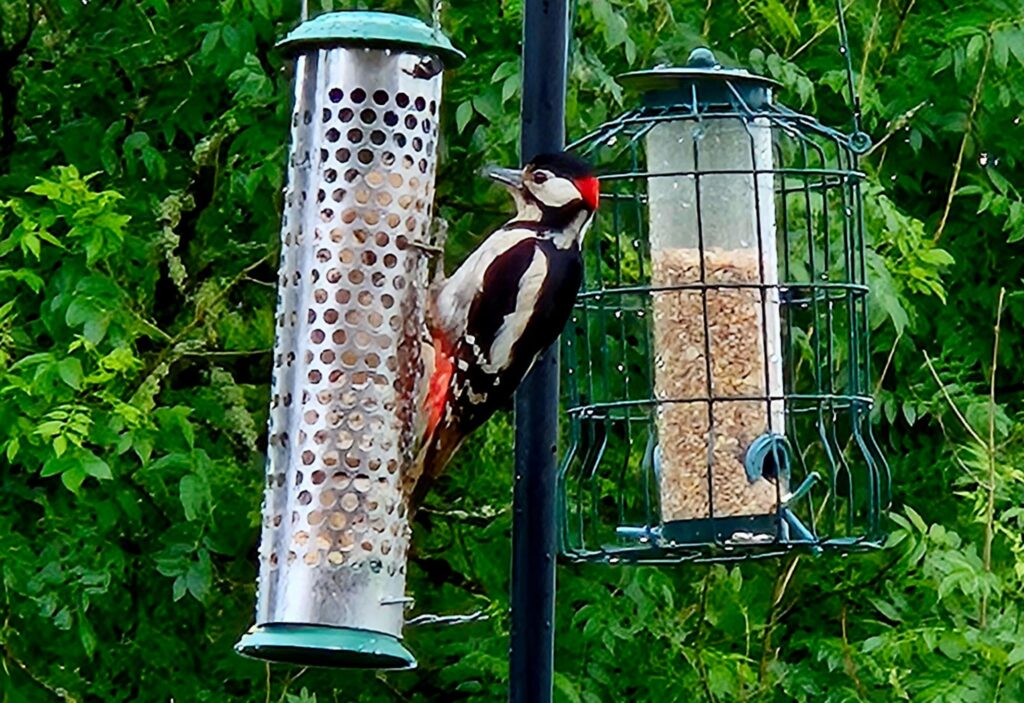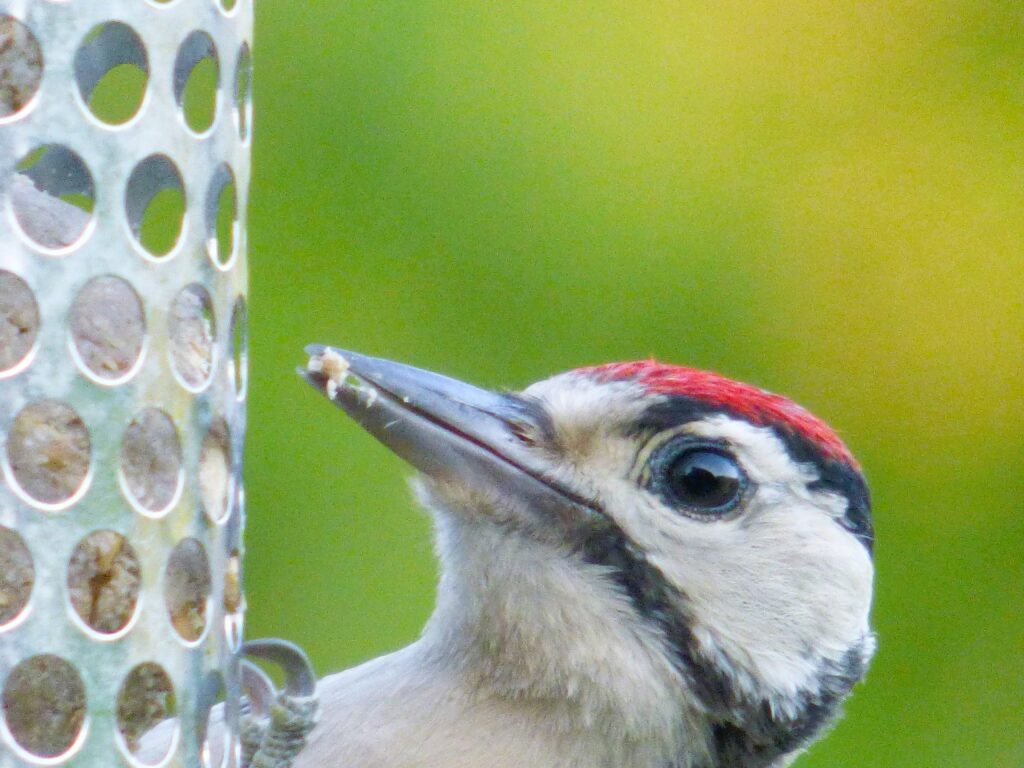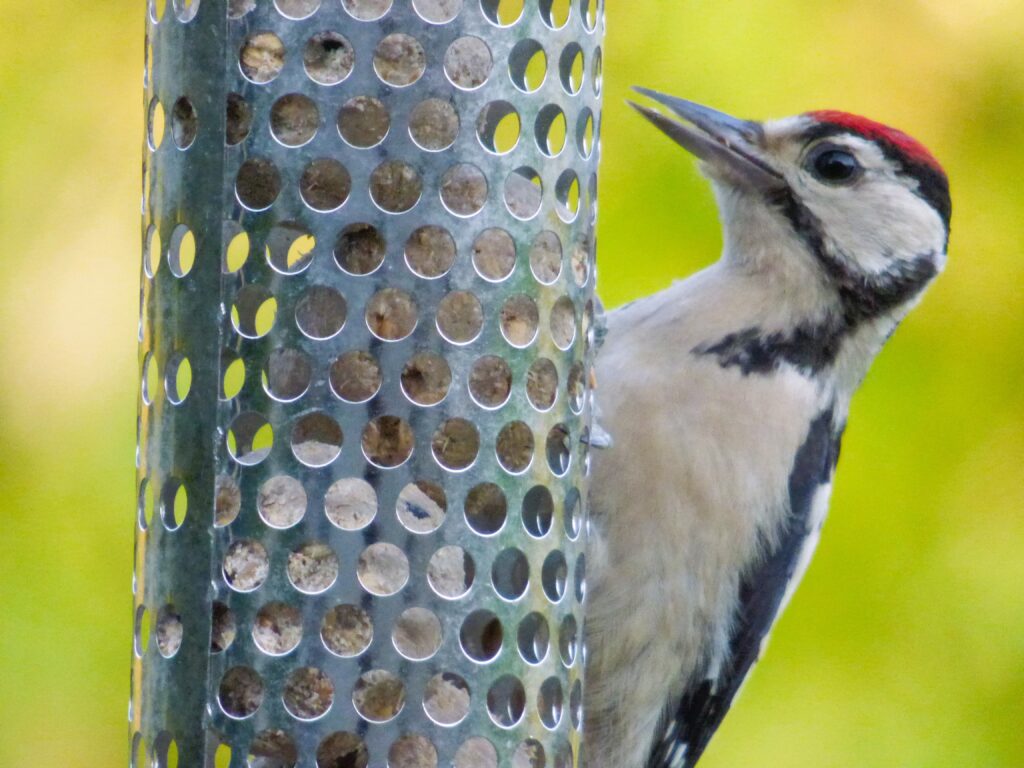How to Attract Woodpeckers to Your Garden in the UK
Attract Woodpeckers to Your Garden
Being able attract woodpeckers to your garden isn’t some secret wildlife whispering trick. It’s about patience, consistency, and giving them a reason to keep coming back. The Great Spotted Woodpecker is surprisingly adaptable, and once one finds your garden, you’ll often see them return again and again — especially if you’ve made it worth their while.

My First Woodpecker Visits
My first visits came after I started mixing up what I was offering and creating a space that felt safe and reliable. It might take days, weeks or even months, but once they lock on to your feeder setup, the results are magical. So much of it comes down to simple tweaks and thoughtful positioning.
It’s less about exotic gear and more about understanding how these birds feed, move, and feel comfortable enough to hang around. You don’t need to live in the woods to make it happen. You just need to think a bit like a woodpecker.
Start with the Food
Woodpeckers have a varied diet in the wild — insects, larvae, tree sap, seeds, and nuts — but in a garden environment, they’re most attracted to high-protein, high-fat options that mimic natural foraging. In my experience, the top-performing items on the feeder include:
- Suet balls or suet blocks (especially ones with insects or peanut bits)
- Shelled peanuts (avoid salted or roasted)
- Peanut butter bird food blends (specifically made for birds)
- Crushed nuts in a mesh feeder
- Mealworms, especially in colder months
Try placing feeders near or against tree trunks, fences, or posts rather than out in the open. Woodpeckers prefer to land on vertical surfaces and often approach from above rather than below. They love to arrive in style.
Positioning is Everything
They like to feel sheltered and will use nearby trees or shrubs as observation posts before heading in. If you can, mount a feeder directly to a post or use a squirrel baffle pole with vertical grip. The closer you can mimic a natural landing surface, the more likely they’ll give it a try. You’ll also want to keep things steady — avoid swinging feeders on long chains. Woodpeckers aren’t built like finches and they don’t love feeders that sway in the wind.


It’s also about creating a safe and welcoming environment. That means keeping the feeder area tidy, reducing noise and disturbance where possible, and avoiding frequent movement nearby. If they feel skittish, they’ll bolt and may not return. Try to place feeders near natural cover such as hedges, ivy, or trees so they can approach gradually.
Once you get regular visits, you’ll start to notice patterns — time of day, order of arrival, even preferred perches. You can also add a water source, like a bird bath or shallow dish, especially in spring and summer. It’s not essential, but it can make your space even more appealing as a one-stop bird café. And don’t forget to clean everything regularly. Mouldy suet and old seed can put off even the boldest visitor.
Lastly, Patience is your Superpower.
I know it’s tempting to check the feeder every five minutes when you’ve put fresh food out, but the best results come from letting nature settle into your space. Woodpeckers are cautious by nature.
They take their time, scout from a distance, and often do a few test fly-bys before committing. My first woodpecker took nearly three weeks of consistent feeding before he finally landed. But when he did, he came back the next day. And then the next. Now I see several different individuals regularly. Keep feeding, keep watching, and keep the faith — your garden might just become their new favourite hangout.

